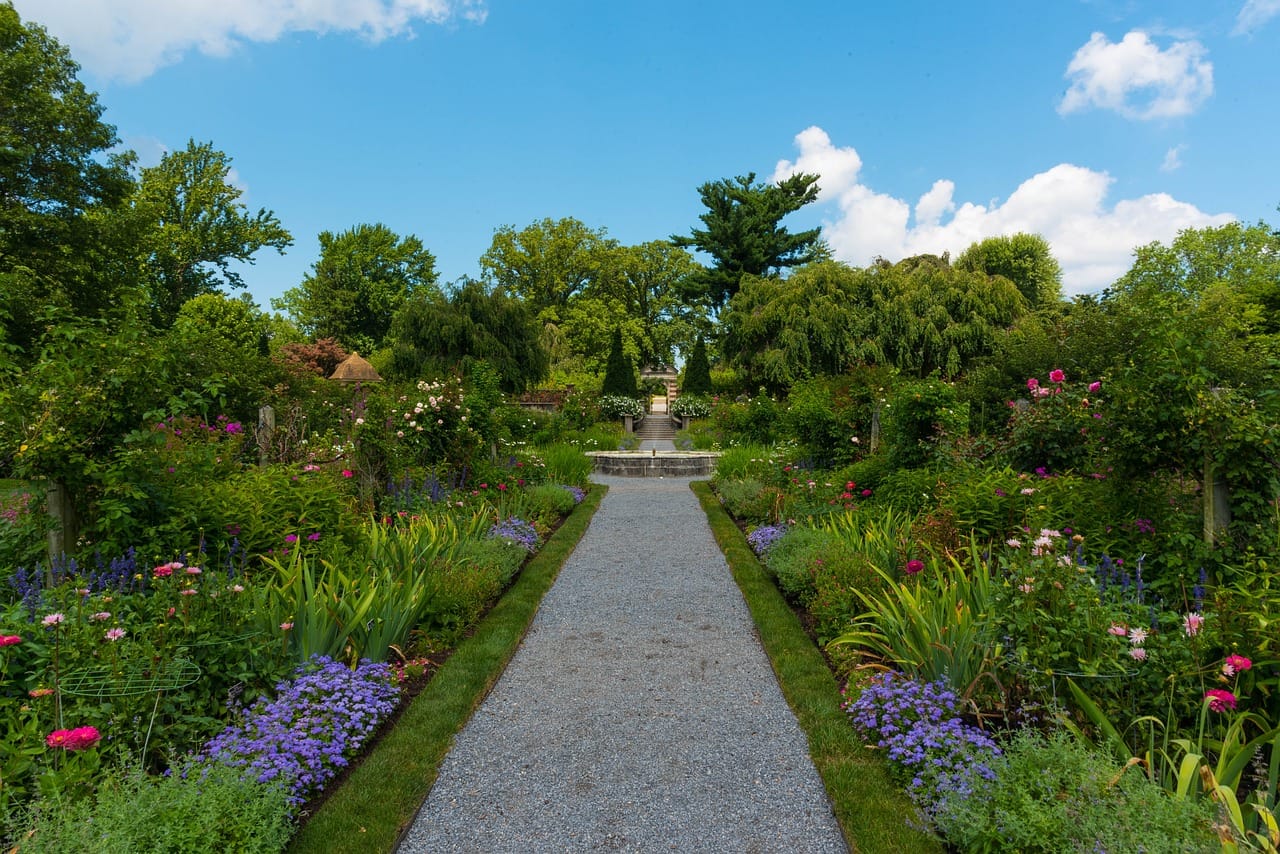Originating in the late 15th Century, the Italian Renaissance garden style is a captivating form of landscape design packed full of history and striking garden elements.
Adapted from the more restrictive and compact styles seen within the Middle Ages, the Renaissance period altered gardens, with designs becoming much more expansive and incorporating the greater landscape surrounding them. Found to have first emerged at villas in both Rome and Florence, these gardens were styled with relaxation and serenity at the heart of their composition. Heavily influenced by the gardens found in ancient Rome, Italian Renaissance Gardens often included a variety of vast historic sculptures, formal evergreen structures and an assortment of open terraced spaces.
Breathtaking spaces constructed from the minds of great creatives and formulated from strong influences of the Renaissance period, let’s unearth the wonders behind the Italian Renaissance garden style.
History
Owned by wealthy families and individuals such as noblemen and popes, Italian villas were traditionally used by the social elite as areas of entertainment and leisure. Therefore, this idyllic and luxurious notion was emulated into the gardens with the creation of orderly yet beautiful Renaissance designs. Inspired by the Roman gardens described in literature from the time, Pliny the Younger was said to have described these gardens as serving the purpose of “Otium”. Loosely translated from Latin to mean “leisure’, Italian Renaissance gardens were ultimately designed as rural retreats for the elite to unwind in, away from the busyness of the city.

Classic design features
Traditionally found in Italian Renaissance gardens, the villa will be situated above the garden, overlooking the landscape and the beautifully sculpted grounds below. Porticos or columns were used in Italian architecture to create sheltered spots for planters and terraces to sit below, with organised and symmetrical planting arranged in the forefront of the garden.
Crafted to translate the peaceful and elegant nature of the central villa outdoors, these designs thus included various garden rooms, extending the refined ambience of the villa out into the landscape. Courtyards and expansive terraces were included within the designs to create an effortless blend between the home and gardens. Using the technique of axial symmetry, you will notice that either side of an Italian Renaissance garden is perfectly reflected. Enclosing networks of pathways, hedging and borders, patterns and shapes are apparent throughout a range of Italian designs and created from these softened landscaping techniques.

Enhancing the idyllic and tranquil notion of these gardens, water features can be noticed throughout numerous Italian Renaissance gardens. From great garden ponds to the gentle flow of water from a tiered fountain, water features are prominent features within these designs, especially due to Italy’s soaring temperatures. Acknowledging gods and goddesses from Ancient Rome, nearby you can often find water features paired with historic Roman sculptures, dotting vast focal points throughout the landscape.

Traditional planting schemes
Filling the garden with glorious year-round interest and verdant structure, Italian Renaissance gardens are traditionally designed with planting recipes dominant with an assortment of rich evergreens. Buxus sempervirens (Boxwood), Taxus baccata (Yew) and Salvia rosmarinus (Rosemary) are just a few examples that can be spotted throughout these designs. Framing glorious patterns and shapes, evergreens wonderfully enhance focal points such as statues and water features whilst creating an elegant formal garden scene filled with beautifully sculpted geometric shapes.

Gardens to visit
An extremely influential garden style, there are numerous Italian Renaissance inspired gardens based throughout the UK. A favourite of ours is the Italian Garden at Arley Arboretum & Gardens. A beautiful walled Italian garden that is open to visit, this Italian garden is a truly breathtaking example of the Italian Renaissance garden style. Dressed with rows of Lime trees, striking evergreen structure and a glorious fountain positioned at the centre of the garden, this garden is a delight for the senses.
A hidden gem concealed within Kensington gardens, make sure to also add their charming Italian gardens to your garden-visit list. Created in the 1860s, these magnificent gardens are filled with expansive water features and extravagant urns. Thought to be a present gifted from Prince Albert to Queen Victoria, these gardens highlight the Prince’s passion for gardening and are a must-see when you next head into London to get a true feel for the Italian Renaissance style.
Looking to add an essence of Italian Renaissance into your garden? Talk to us to find out how our skilled landscape designers could shape your garden into a tranquil Italian gardenscape.


